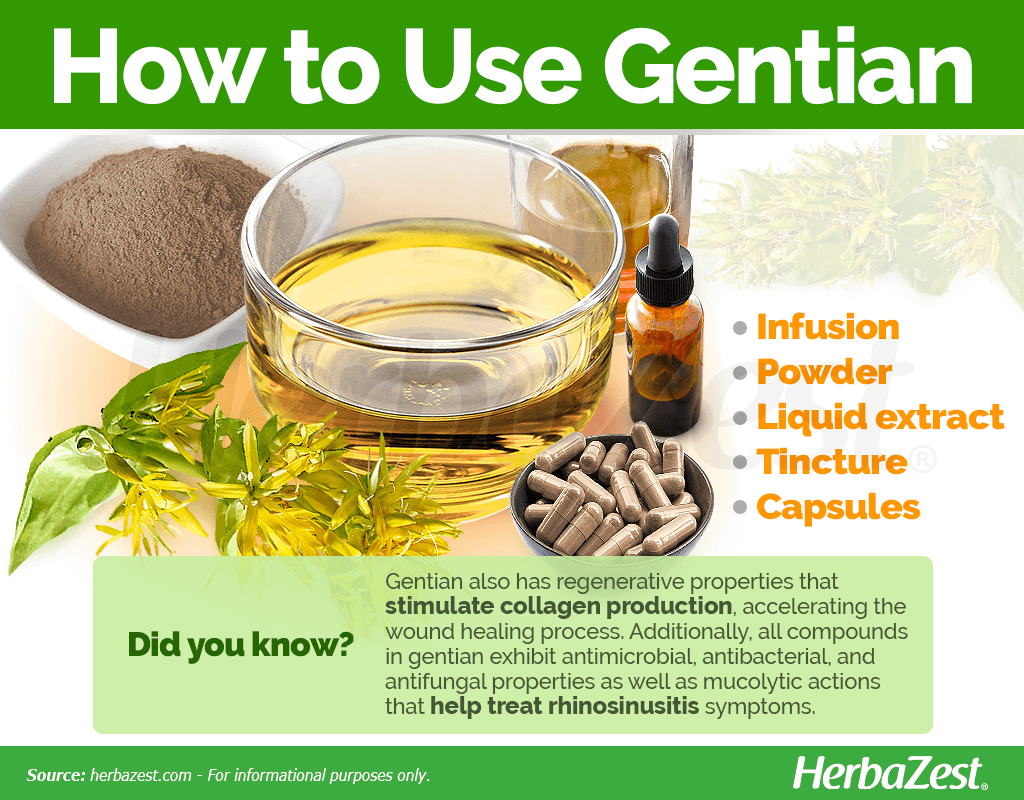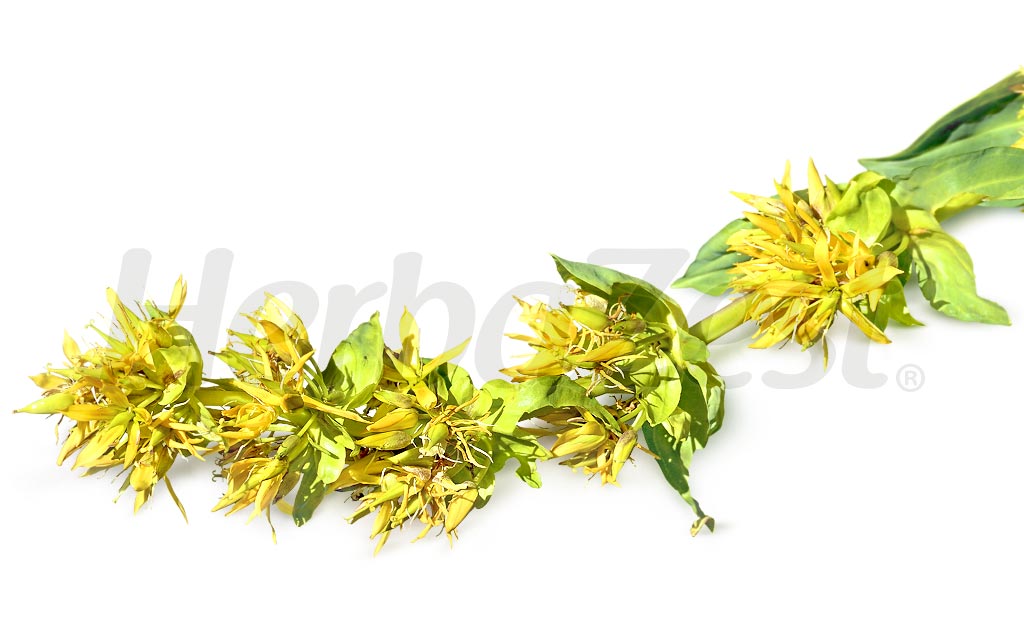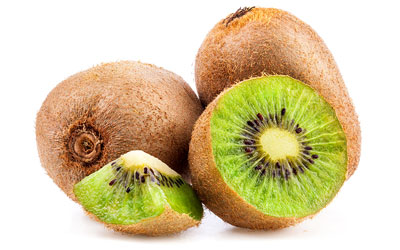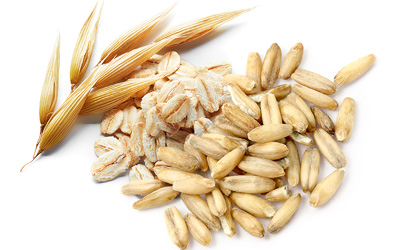Already a well-known healing agent by the rise of ancient Greece and Rome, gentian has long been employed for human use throughout history. Gentian is native to temperate, mountainous regions of central and southern Europe, particularly thriving in the Pyrenees, the Alps, and the Balkans. However, many species of gentian grow natively around the world.
Gentian Medicinal Properties
- Medicinal action Cardioprotective, Choleretic
- Key constituents amarogentin
- Ways to use Capsules, Food, Tincture, Syrup
- Medicinal rating (1) Very minor uses
- Safety ranking Use with caution
Health Benefits of Gentian
Used for many centuries for medicinal purposes, gentian continues to be beneficial today. While there are numerous uses for gentian, some of its main health benefits include:
Aiding digestion. The bitter compounds of gentian stimulate gastric secretions, including bile flow, and gastrointestinal motility.
Improving cardiovascular health. Gentian supports cardiac function by reducing inflammation.
In addition, gentian is thought to possess other medicinal benefits, such as:
Healing wounds. Studies have suggested that gentian has regenerative properties that quicken the healing times for surface wounds, such as burns and cuts.
Treating sinus infections. Research shows that taking gentian in combination with other herbs with similar properties can help reduce the symptoms of sinus infections.
How It Works
Gentian has numerous compounds which give it its medicinal properties. First and foremost, amarogentin, a monoterpene, has antibacterial and antifungal attributes, and is also mainly responsible for the plant's highly bitter taste that stimulates the gustatory nerves in the mouth, increasing saliva production and appetite. By stimulating gastric juices to prime the stomach, many gastrointestinal problems are relieved, such as flatulence and indigestion.1
Additionally, gentian's constituent gentisin has shown an anti-atherosclerotic activity, preventing endothelial inflammation and smooth muscle cell migration in the vascular system, thus promoting vascular health.2
Another important aspect of gentian's medicinal properties is its antimicrobial activity, which is due to its high concentration of the chemical compounds mangiferin, isogentisin, and gentiopicrin. Moreover, gentian roots also contain substances with mucolytic action, which helps treat rhinosinusitis symptoms.3,4
Gentian has been shown to increase collagen production, which explains its healing properties.
Choleretic properties are also present in herbs like boldo and chicory, whereas kiwi and tomato can provide similar cardioprotective benefits.
Gentian Side Effects
Gentian is considered safe for most people when taken by mouth. However, it can occasionally cause upset stomach after being ingested, and a minor skin rash in sensitive individuals when applied topically.
Cautions
Gentian can lower blood pressure. For this reason, individuals who are taking anti-hypertensive medication should avoid gentian preparations. For the same reason, consuming gentian prior to surgery is not recommended.
Additionally, gentian tinctures and decoctions should not be taken by those suffering from acid indigestion and peptic ulcers.
Women who are pregnant or breastfeeding should consult a doctor before taking gentian medicinally.

How to Consume Gentian
- Edible parts Root
- Edible uses Beverage
- Taste Bitter
Because gentian is not often used in a culinary capacity, the most effective way of obtaining its health benefits is in medicinal forms of consumption, where the properties are more concentrated.
Natural Forms
Infusion. One of its most popular medicinal forms, gentian hot tea stimulates appetite, as well as treating sinus infections through its mucolytic properties.
Powder. This digestive aid powder is thought to improve bile flow better than tincture, capsules, or tablets.
Herbal Remedies & Supplements
Liquid extract. In this distillated form, gentian can improve cardiovascular health, largely due to its anti-atherosclerotic properties. Gentian extract also heals wounds faster thanks to its antimicrobial properties and collagenic compounds.
Tincture. Alcoholic-aqueous root extracts of gentian are consumed to help stimulate appetite and aid digestion. Two to four drops of gentian tincture may be added to water and drank before meals.
Capsules. A commercially popular form, gentian capsules are often taken to promote cardiovascular health due to its anti-inflammatory and anti-atherosclerotic properties.

Buying
- Where to buy Big online retailers, Specialized health stores, Online herb stores
Natural Forms
Fresh and dried roots, both whole and in powder form, can be found in some specialized health stores, though they are most common in regions of widespread cultivation. It is also possible to find the herb dried through online retailers, who offer various quantities and selections.
Herbal Remedies & Supplements
Many major wholesale retailers offer a variety of gentian supplements, and online outlets provide a wealth of possibilities in regards to price, concentration, and method of consumption.
Growing
- Harvested parts Roots
- Growing habitat Everywhere except tundra
While gentians are considered beautiful plants, they are not very common in gardens because they can be difficult to grow. Gentians grow around the world, including the Arctic, where the plants lives for only a year and grow tiny, delicate flowers. They need cool, temperate climates and may need a specific fungi in the soil in order to survive.
Growing Guidelines
Alpine plateaus provide the best environment, so similar conditions are ideal, with pre-planting temperatures hovering around 50°F (10°C) and later dropping between 32 - 41°F (0 - 5°C). Mimicking their natural environment will give them their best chance of survival.
Plants can take between two and seven years to reach flowering size, after which time the roots can be harvested for use in autumn months.
Since gentian seeds require darkness to germinate properly, a garden spot with partial shade is recommended.
Gentians require lots of moisture and a well-drained soil in order to thrive.
After being planted, gentian roots should not be disturbed, otherwise they will likely die.
Additional Information
Plant Biology
Gentian reaches a height of two to four feet (61 - 122 cm) and has broad, elliptical leaves underneath bright yellow flowers. The petals of each bloom are narrow and radiate from a base corolla. A taproot that averages one foot (30 cm) long and up to two inches (51 mm) in diameter provides the greatest concentration of the plant's active medicinal ingredients.
Gentiana flowers come in a wide array of colors and sizes, depending on where they are grown in the world. Members of the gentian species are classified by their oppositely arranged leaves, as well as their trumpet-shaped flowers.
Classification
Scientifically known as Gentiana lutea, gentian is a member of the Gentianaceae family, which features about 87 genera and 1,600 species of flowering plants.
The genus name Gentiana is in tribute to Gentius, an Illyrian king who was believed to have discovered the herb's tonic properties.
Varieties and Subspecies of Gentian
Gentian is not a species, but rather a genus of plants. Many members of the Gentiana genus go by the name of 'gentian,' but only Gentiana lutea, or yellow gentian, is commonly used in herbal medicine. G. scabrae, or Japanese gentian, and the Swedish G. campestris, or field gentian, are sometimes also used in bitter tonics. G. verna, or spring gentian, is an ornamental British variety with bright blue flowers. These are the most common, though there are many more.
One gentian was discovered in South America in 2001, and the discoverers decided to give it a Harry Potter themed name: the Apparating Moon Gentian.
Historical Information
Gentian is depicted on the reverse side of certain banknotes printed in Albania in 2000 to commemorate the herb's namesake, king Gentius of old Illyria.
Ancient Greek and Roman herbalists, such as Dioscorides and Pliny, first documented gentian as a treatment for animal bites, digestive issues, and fever. Its common name is reminiscent of the Illyrian king Gentius, who ruled the latter territory circa 180 BCE.
Gentian medicinal uses were later expanded in the Middle Ages, when the herb was prescribed as an antidote for poison and as a metabolic enhancer. Several centuries later, British colonists brought the herb to North America, where by 1865 it had become the most popular cure for tobacco poisoning on the continent. The U.S. government officially endorsed it as a bitter tonic until 1910, and today gentian remains popular among herbalists.
Economic Data
Wild populations of gentian are now scarce, but commercial cultivation is increasingly common as renewed interest in herbal medicine creates the demand. As of 2005, 11 major European growers were generating the majority of the worldwide yield, two of which were using organic agricultural methods. Since that time, pharmaceutical generation of the herb has only continued to combine with its lucrative inclusion in bitter beverages around the world.
Other Uses of Gentian
In the beverage industry, gentian is one of the main ingredients in the American-based soda Moxie. In fact, the herb is where it gets its distinct flavor from.
Gentian has steadily gained popularity worldwide for its medicinal usefulness. Not only does this bitter herb aid in digestion and help improve cardiovascular health, but its consumption also shortens the healing time of wounds and assists in treating sinus infections. Look for selections online or try a hand out in growing it to reap its many benefits.
Sources
- European Medicines Agency, Committee on herbal medicinal products: Assessment report on Gentiana lutea L. radix
- National Institutes of Health, Effects of gentiopicroside, sweroside, and swertiamarine, secoiridoids from gentian (Gentiana lutea ssp. Symphyandra), on cultured chicken embryonic fibroblasts, 2006
- Encyclopedia of Natural Medicine, pp. 134-6
- Medicinal Plants of the World, pp. 155, 356-7
- The Herb Book, pp. 401-2
- Phytotherapy Research, Effects of Gentiana lutea spp. Symphandra on the central nervous system in mice, 2002
Footnotes
- Journal of Traditional and Complementary medicine. (2017). Medicinal, biological and phytochemical properties of Gentiana species. Retrieved on November 14, 2023, from: https://www.ncbi.nlm.nih.gov/pmc/articles/PMC5634738/
- Nutrition, Metabolism, & Cardiovascular Diseases. (2016). Gentiana lutea exerts anti-atherosclerotic effects by preventing endothelial inflammation and smooth muscle cell migration. Retrieved on June 8, 2016 from http://www.nmcd-journal.com/article/S0939-4753%2815%2900264-1/abstract
- National Institutes of Health. (2009). Antimicrobial activity of Gentiana lutea L. extracts. Retrieved on June 8, 2016 from http://www.ncbi.nlm.nih.gov/pubmed/19678535
- National Institutes of Health. (2015). Phytoneering: a new way of therapy for rhinosinusitis. Retrieved on June 8, 2016 from http://www.ncbi.nlm.nih.gov/pmc/articles/PMC4443571/






